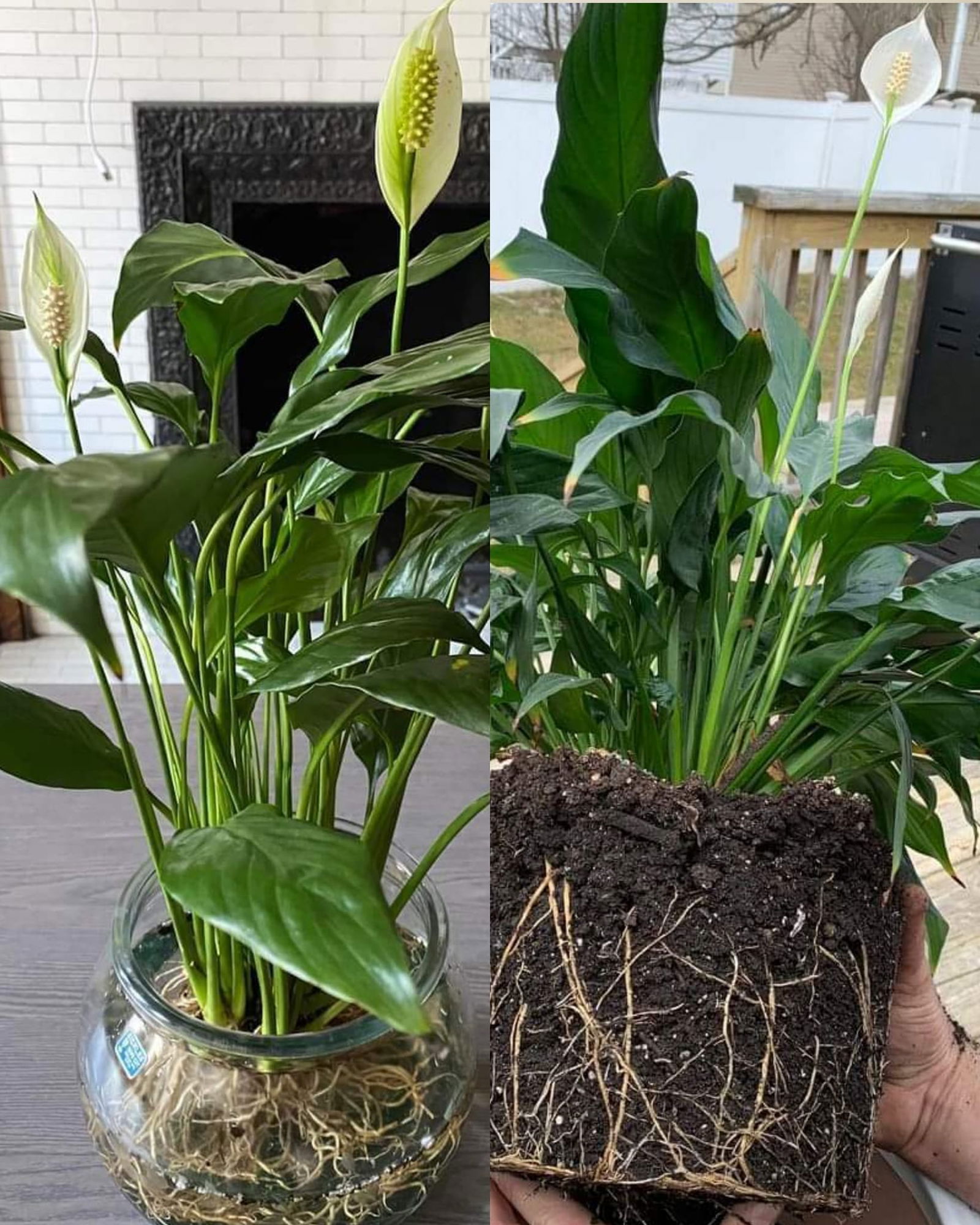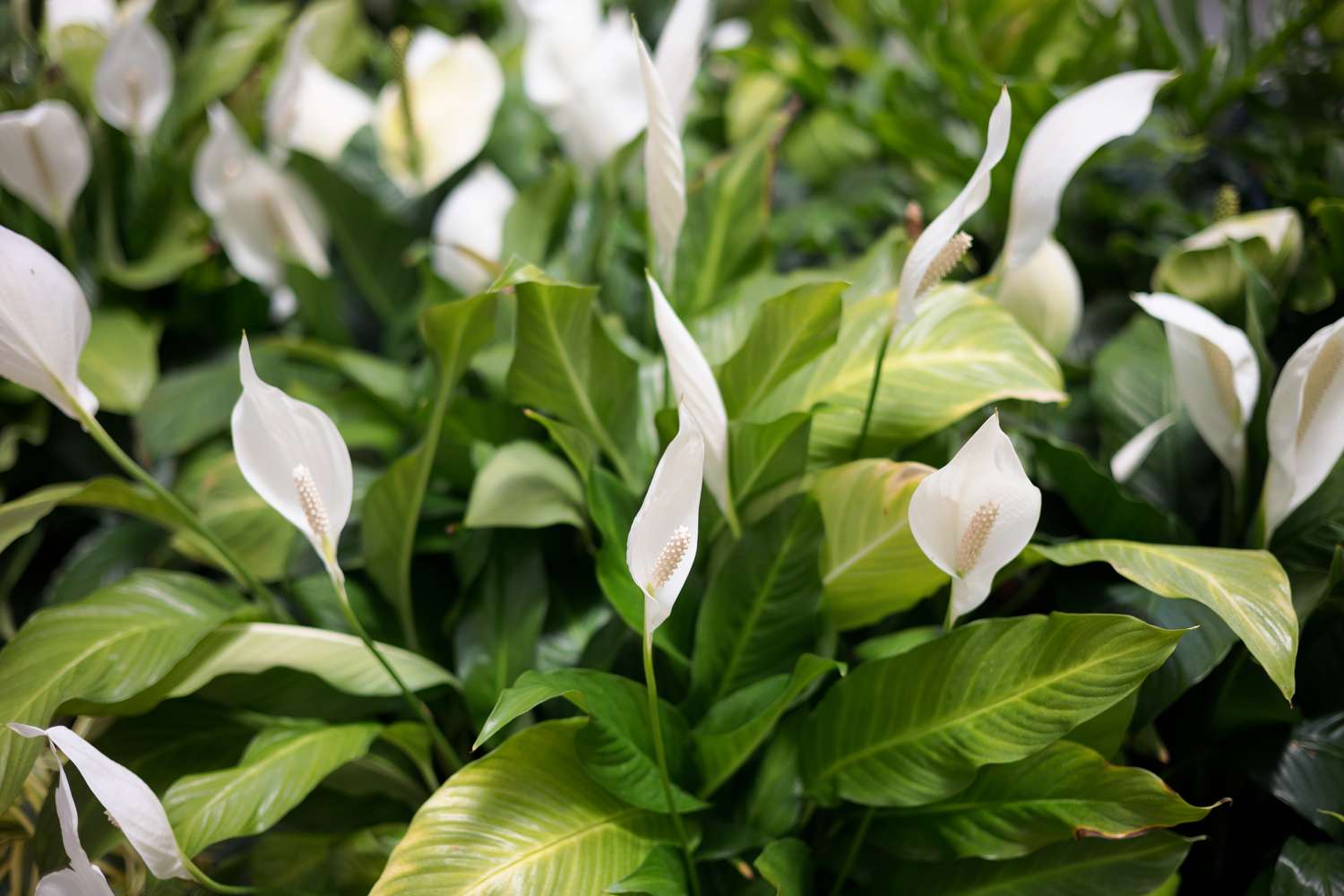
Learn how to make the Peace Lily bloom and brighten your interior with its subtle touch of elegance, beauty and serenity!
If you’re a big fan of white flowers (bracts), peace lily must be on your bucket list. While indoor plants are hardy and thrive with little maintenance, flowering will grab most of your attention with uncertain results. That’s why we have this in-depth article to help you learn how to make peace lilies bloom!
What does a peace lily look like?
Peace lilies form small flowers on spikes protected by large white bracts – often mistaken for a single flower. The flowers aren’t very fancy, looking like extensions of stems with only pollen at the ends, but it’s the white flag-like bracts that make this houseplant so special.
The plant blooms naturally in spring and summer. In warm climates, they can bloom year-round, especially starting in winter.
What’s Stopping Your Peace Lily to Blooming?

Appropriate sunlight is the crucial point most gardeners miss out on. Your peace lilies need warmer temperatures of 60-86 degrees Fahrenheit (15-30 C) Produces perfect bracts. Higher temperatures will turn the leaves yellow, while lower temperatures will stunt their growth.
Another common mistake is overwatering. The plant prefers moist but well-drained soil. The trick is to maintain moisture without allowing the water to settle near the roots, which causes root rot. Keep feeling the top inch of soil using your finger and water accordingly.
1. Keep it Root Bound
Keeping the plant slightly root bound will promote blooming as it will then direct its energy into growing white bracts rather than spreading its roots.
2. Use Gibberellic Acid
Gibberellic acid, a natural phytohormone derived from fungi, promotes the blooming of peace lilies and also helps produce high-quality blooms in other tropical plants, according to the University of Florida extension.
Use 125, 250 or 375 ppm acid in a foliar spray for best results. You can get it at a garden center or online and follow all label directions.
3. Get a Mature Plant

Young peace lily plants will not flower. If you want consistent flowers, it will be a good idea to get a 1 or 2 years old specimen.
4. Grow the Right Variety
Hybrid cultivars of this plant are the ones to go for if you want more flowers. ‘Petite,’ Connie,’ ‘Mini,’ ‘Tys Pride,’ ‘Little Angel,’ and ‘Viscount’ are some of the best ones you can grow they’re beautiful and popular for their blooms.
5. Give it the Right Amount of Light
Place your peace lily at a place that receives bright indirect light. East-facing windows provide the perfect blend of light and shade while fulfilling the feng shui principles of well-being.This indirect light should be enough for you to be able to read what’s in it.
Bright and diffuse light gives your peace lily the energy to photosynthesize and produce more blooms.
6. Expose the Plant to a Right Temperature
Plants exposed to low temperatures of 12°C (54°F) may flower 3-4 weeks earlier than non-refrigerated plants, according to a report from the University of Florida’s Institute of Food and Agricultural Sciences.
Do not let the temperature go below 12 C (54 F) and avoid exposing the plant to temperatures higher than 86 F or 30 C for best blooms.
7. Keep Photoperiod / Photoperiodism in Mind

A report from the University of Florida states that plants that don’t bloom in late summer or fall don’t produce flower buds during the long June-August days/short night photoperiod.
Photoperiod is a response to changes in day length that allow plants to adapt to seasonal changes in their environment, making them grow and flower better.
8. Avoid Using Chlorine in the Water
Peace lily dislikes the water contaminants such as fluoride and chlorine as they can turn the foliage brown. Use RO or rain water for best growth.
9. Use the Right Fertlizer and Avoid Overfeeding
Use a water-soluble houseplant fertilizer in a 20-20-20 ratio diluted to half its strength, once every 3-5 weeks. Pay close attention to the health of the flowers. A greenish tint indicates over-fertilization and needs to be reduced immediately.
10. Make Sure it Gets the Correct Humidity
Peace lilies need high humidity to produce fuller leaves and blooms. Mist the plants with warm water or turn on a humidifier around the plants. Placing the pot in a saucer filled with pebbles and half water will also do the trick.




















